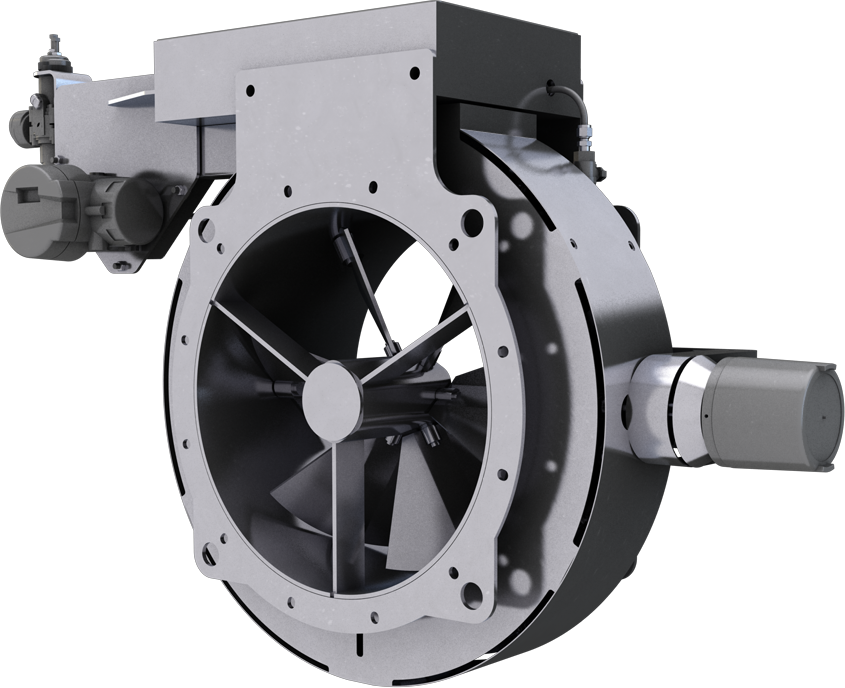Power saving with Inlet Vane Control.
When a fan is chosen for a specific duty, it is standard practice to allow a safety margin on performance to account for pressure loss discrepancies and natural variations from predicted output. It is therefore necessary to have some method of trimming out the surplus, to achieve the actual desired performance.
The Inlet Guide Vane control is an energy conscious device and is ideally suited for this purpose.
In figure 1 above, we show a typical fan performance curve, and the associated family of curves corresponding to various settings of the IVC blades. In the absence of an IVC, the system would follow the 'Fully Open' curve and the volume VA would be produced. If the volume were reduced by employing a discharge damper ie by increasing total system resistance, the system operation point would be driven round to point B on the curve to produce the controlled volume VC.
Speak to the experts
Call today to book a meeting with our engineers
Alternatively, by using an Inlet Guide Vane, the fan can be made to perform as though its characteristic had been change to that marked Alpha 3, and the desired controlled volume will be generated at duty point C.
Please note that the pressure loss across the discharge damper for the first method of control is effectively the pressure difference (Pb-Pc).
The power consumption curves above correspond to the volume characteristics marked Alpha 1 to Alpha 5 in figure 1 and the duty points marked A, B & C, also correspond.
Thus we see that, by using a discharge damper, the power consumption reduces slightly to value B, since although there is a reduction in volume, the extra resistance of the damper must be overcome. However, the installation of an IVC reduces the power to C, since fan efficiency is maintained.
Since a variable speed drive is less efficient than fixed speed, control at the top end of the range where IVC control is being achieved by swirl generation will be very similar with either an IVC or a variable speed drive. In fact, control by IVC may even show an advantage. At the near closed position, the IVC chokes the mass flow, generates little swirl, and generally produces the same type of control as a discharge damper. In the middle of the range, there are two components of control which add together, one created by swirl, and one by constriction of mass flow. The power volume characteristic for an IVC is therefore asymptotic to the variable speed characteristic at full volume, and asymptotic to the damper characteristic at minimum volume.
Where full modulation is required, the IVC will give excellent control coupled with energy savings comparable to variable speed drive (assuming that the fan normally runs at near to its designed volume ie does not run for extended periods at high turn-down). Since it is mechanical, inherently simple, and is independent of the fan drive, it is more reliable in service than a variable speed drive.










